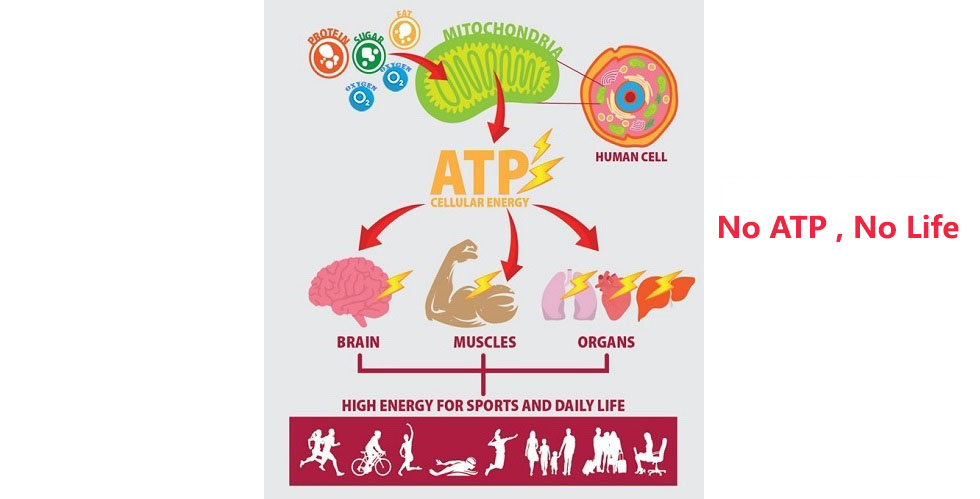Energy and Mitochondria
`Mitochondria, THE POWERHOUSE of the Cell'
Illustration of mitochondria and ATP to powder our body

What is ATP (Adenosine triphosphate) ?
The source of energy that keeps our body living is called ATP.
Found in all forms of life, ATP is often referred to as the "molecular unit of currency" or the “energy currency of life”. The body’s cells use ATP to power almost all activities, such as muscle contraction, protein construction, transportation of substrates, communication with other cells, dismantling damaged and unused structures.
What is the function of Mitochondria?
The most important roles of mitochondria are to produce energy currency of the cell, ATP, through respiration, to power physiological events and to regulate cellular metabolism. Therefore, Mitochondria are considered the POWERHOUSE of the cell.
The most important roles of mitochondria are to produce energy currency of the cell, ATP, through respiration, to power physiological events and to regulate cellular metabolism. Therefore, Mitochondria are considered the POWERHOUSE of the cell.
What is Mitochondria?
It is a rod shape organelle that take in food nutrient and convert into energy, ATP, that all living cells can use.Mitochondria are commonly between 0.75 and 3 μm in diameter but vary considerably in size and structure.
Where is Mitochondria located and how many?
Mitochondria are small organelles floating free throughout the cell. Some cells have several thousand mitochondria while others have none. The number of mitochondria in a cell is proportional to the energy demand of the cell. Muscle cells need a lot of energy, so they have large amount. Heart muscles may have about 5,000 mitochondria per cell. Most abundant in muscles, brain, liver and heart.

Energy Efficency in Mitochondria
A dominant role for the mitochondria is the production of ATP, This is done by oxidizing the major products of glucose: pyruvate, and NADH, which are produced in the cytosol.
- This type of cellular respiration known as aerobic respiration, is dependent on the presence of oxygen.
- When oxygen is limited, the glycolytic products will be metabolized by anaerobic fermentation, a process that is independent of the mitochondria.
The production of ATP from glucose has an approximately 13-times higher yield during aerobic respiration compared to anaerobic fermentation.
Most ATP form in the cells, is produce during oxidative phosphorylation. Most of the oxygen we breathe is consumed within the mitochondria, and most of the carbon dioxide created, is produced within them as well.


